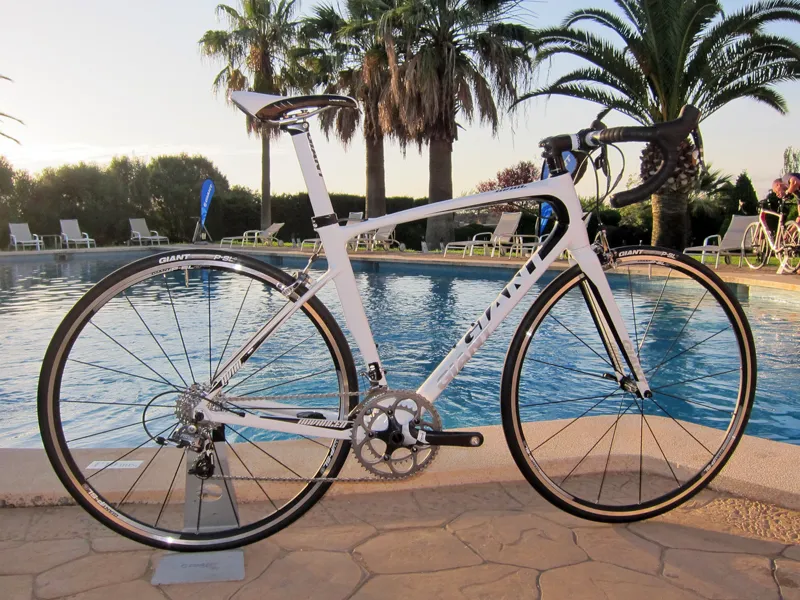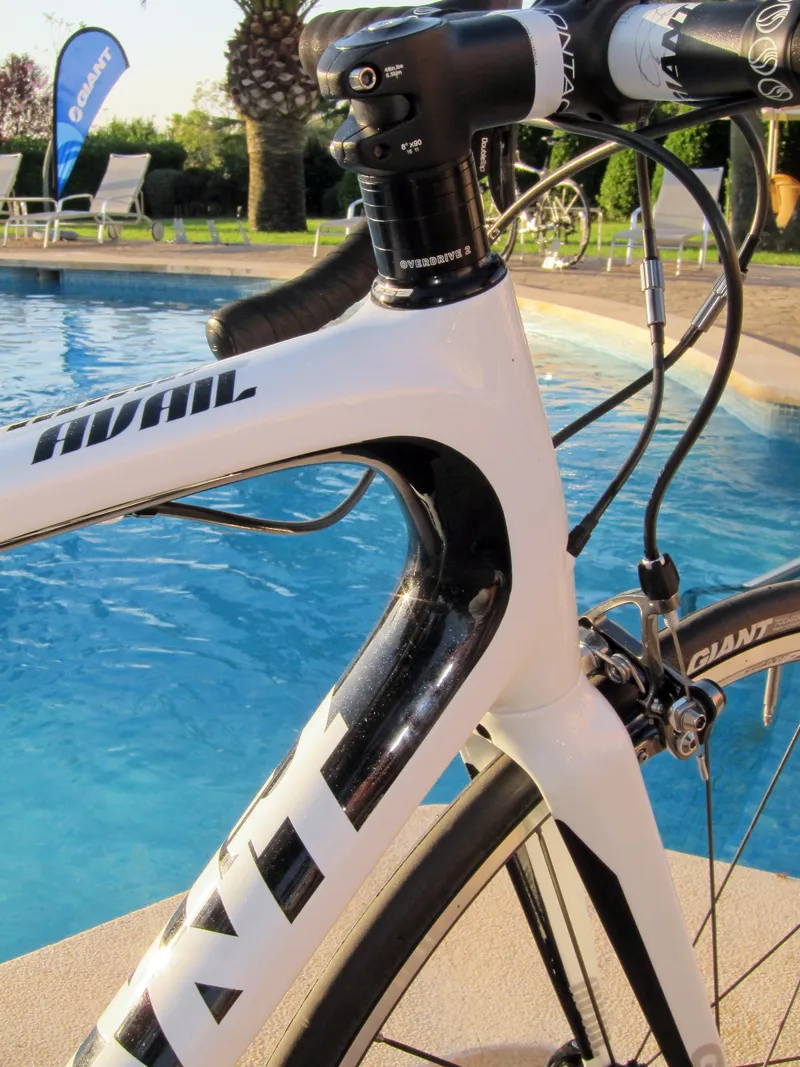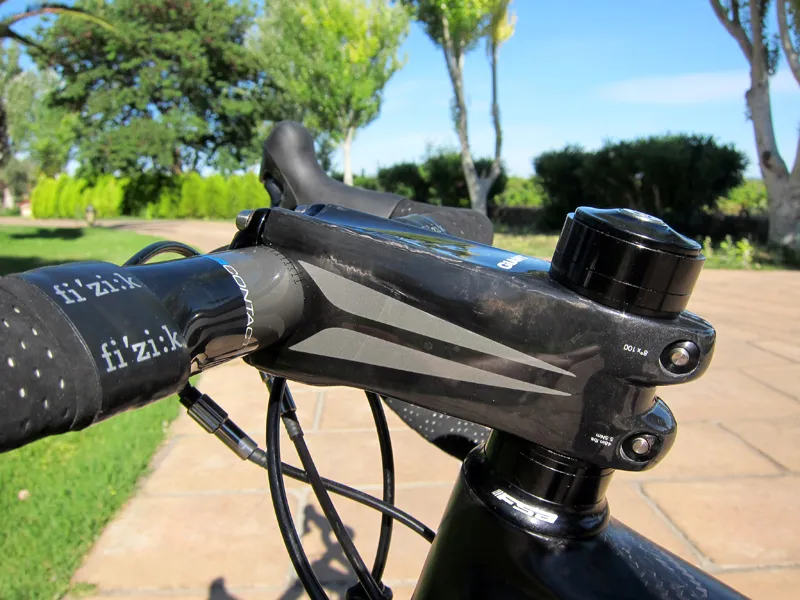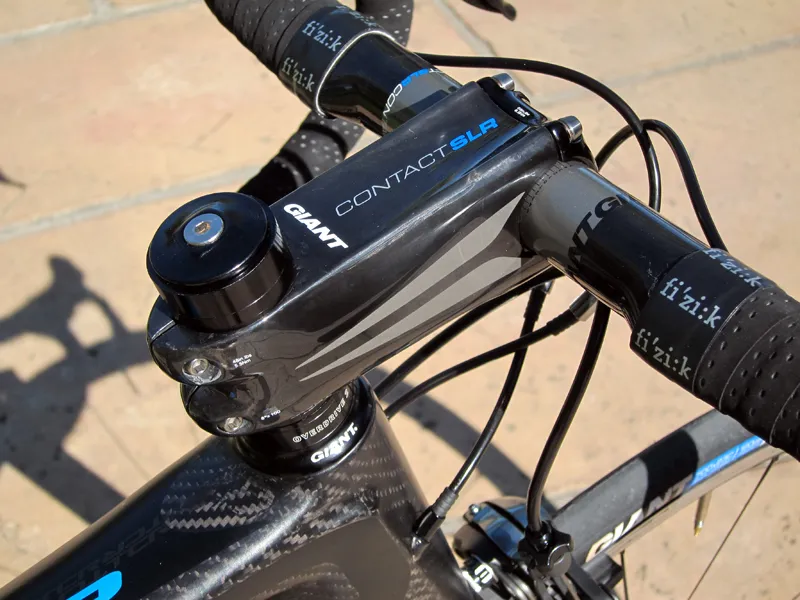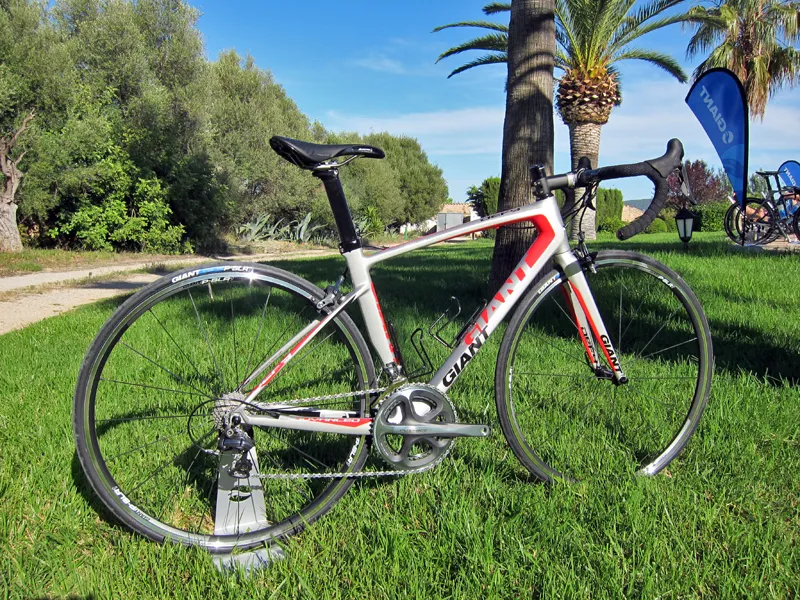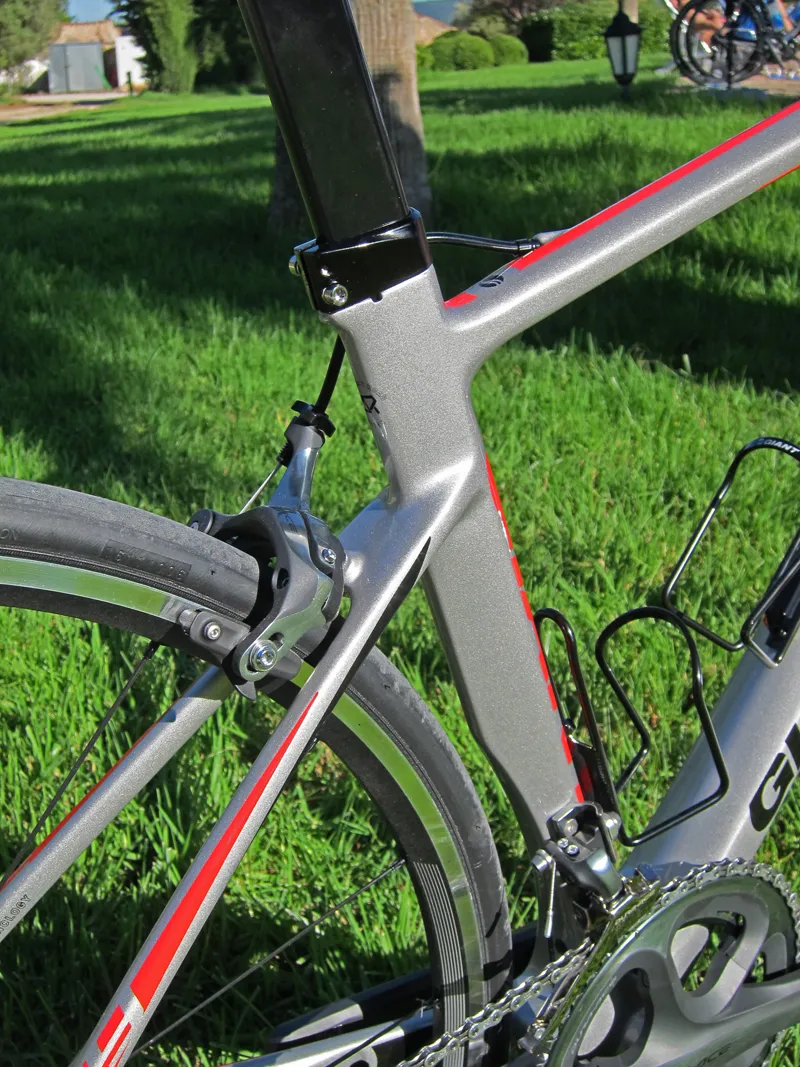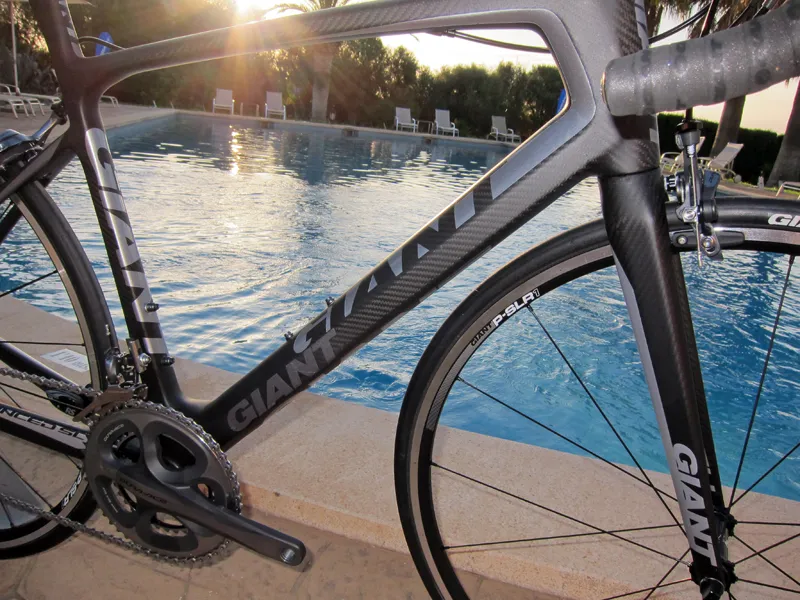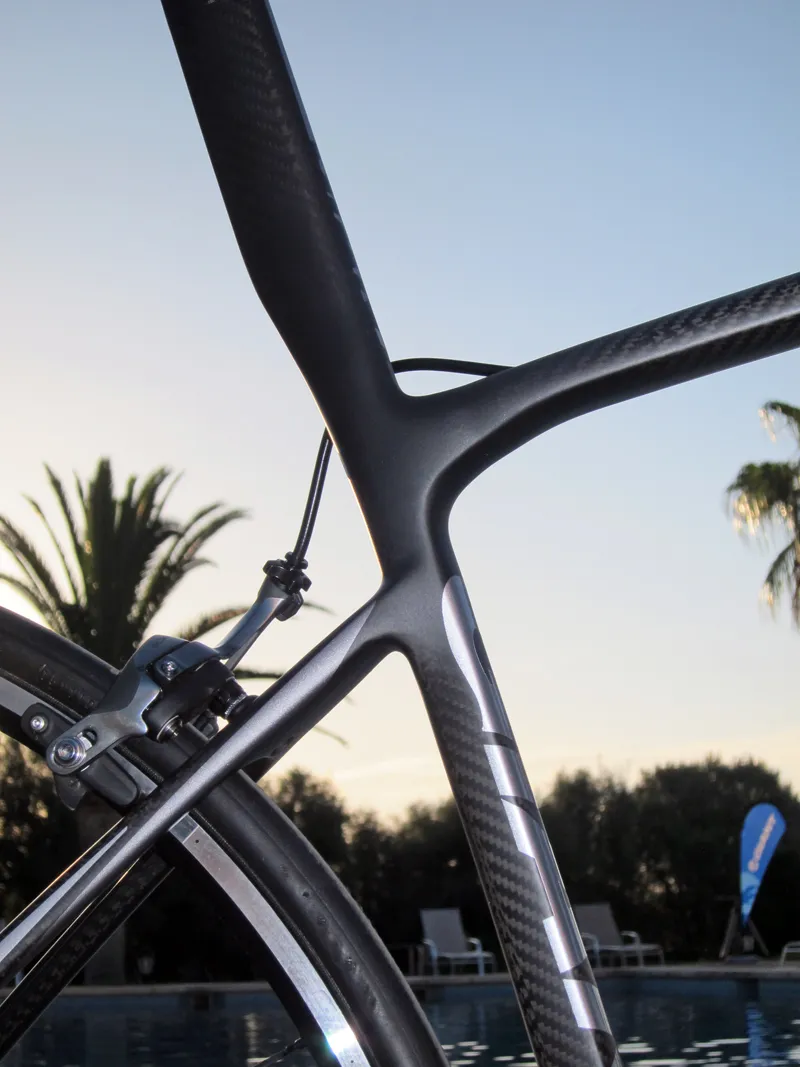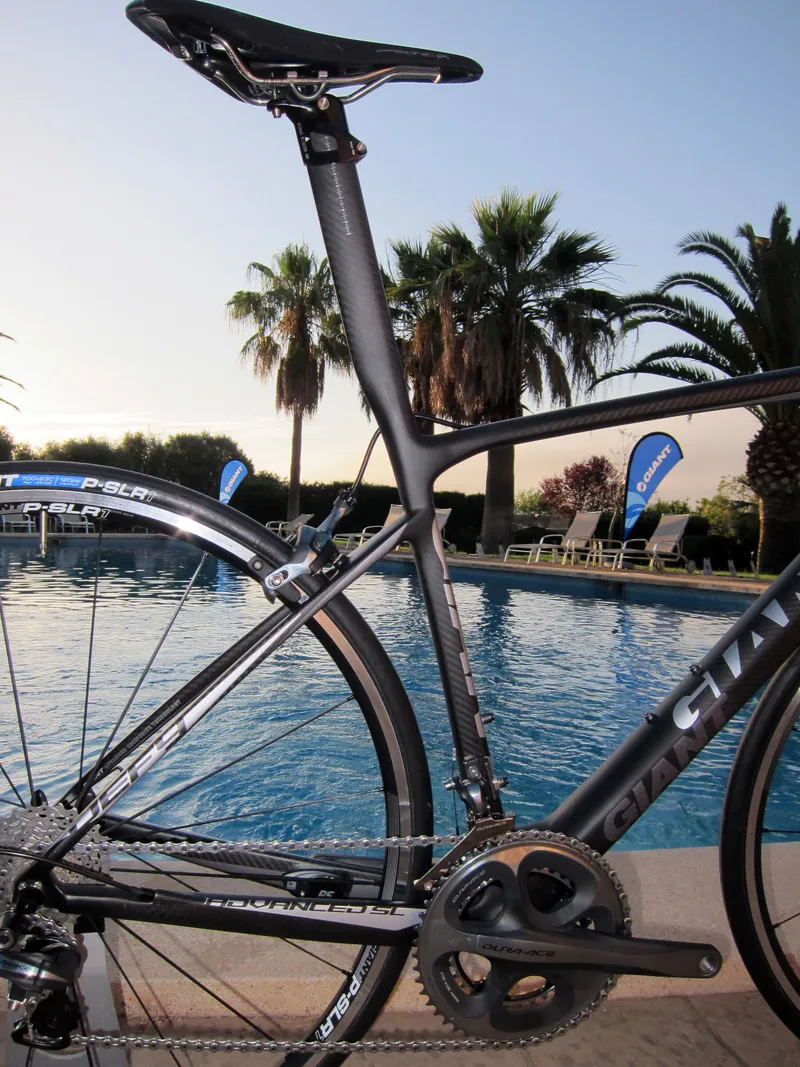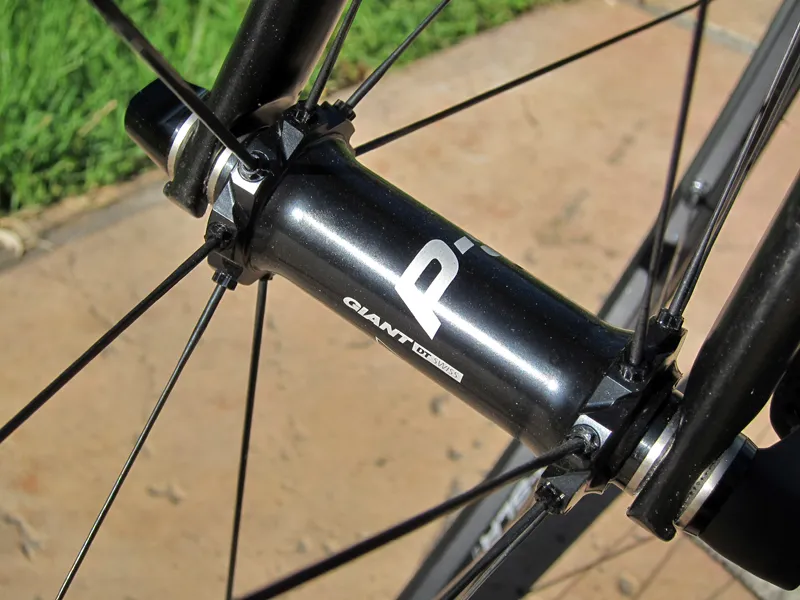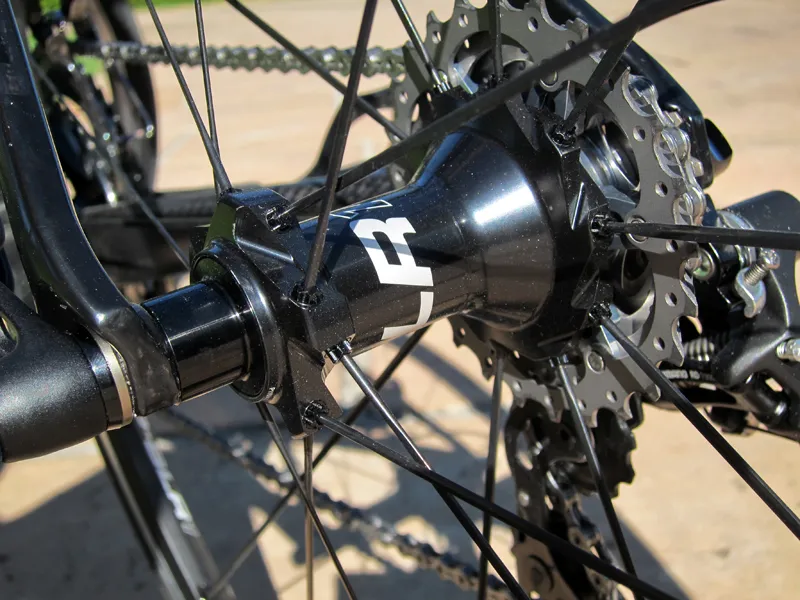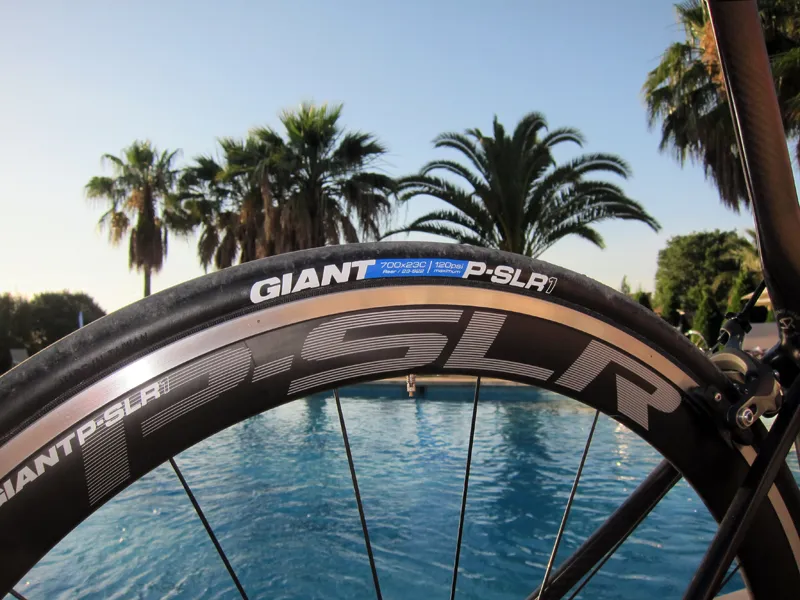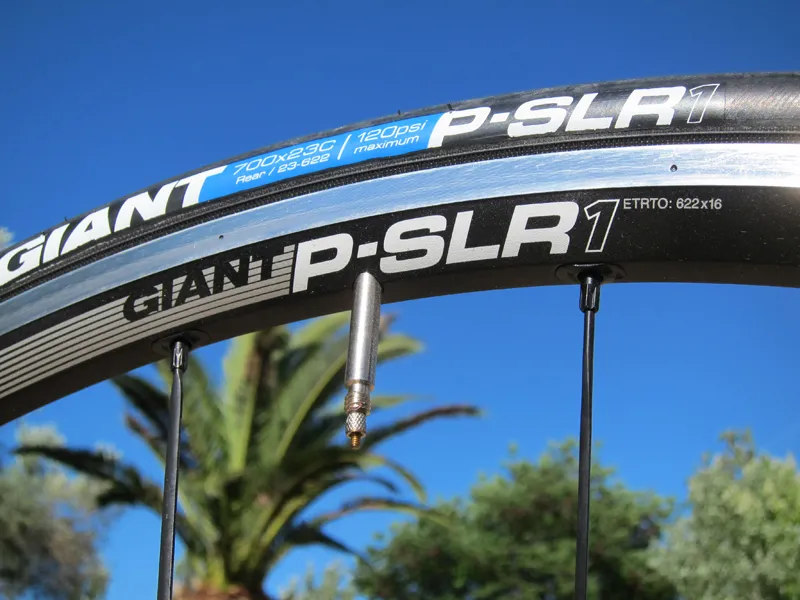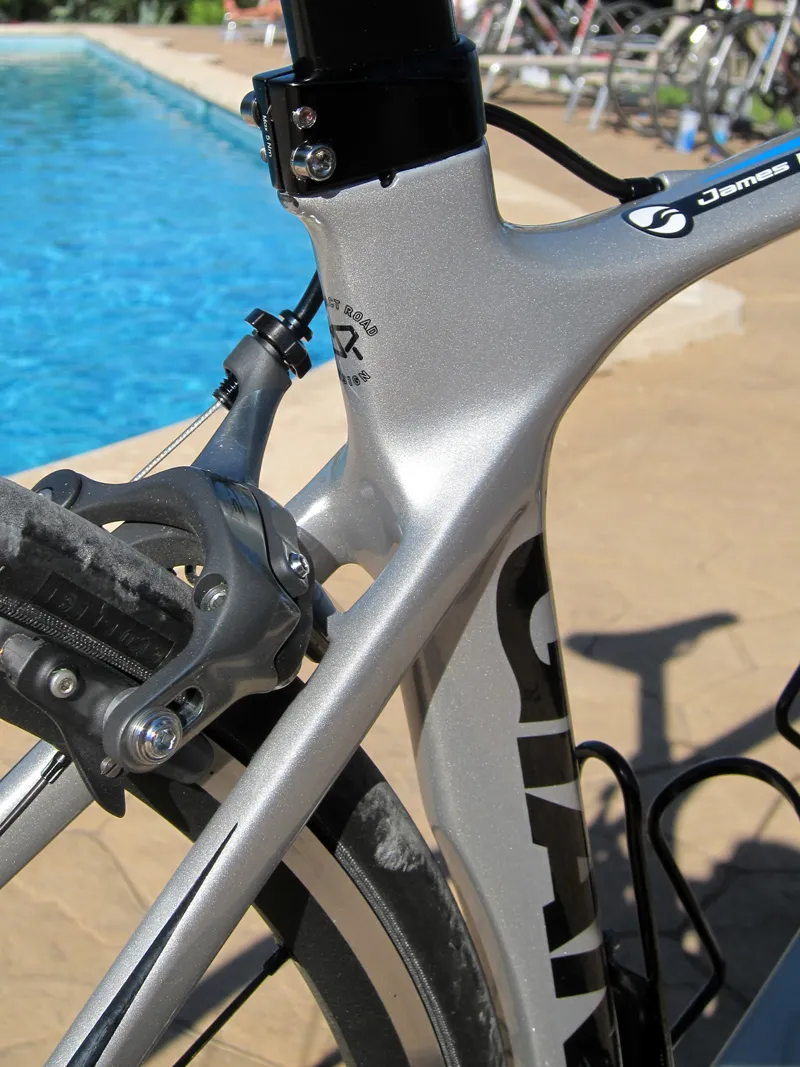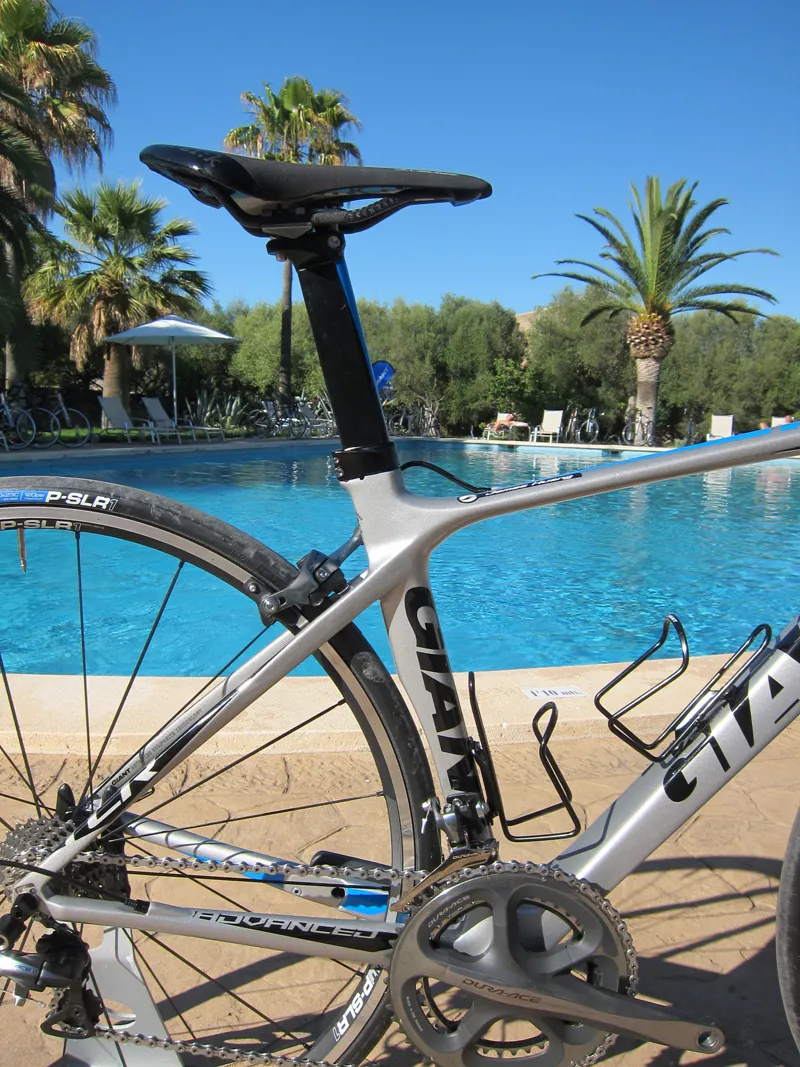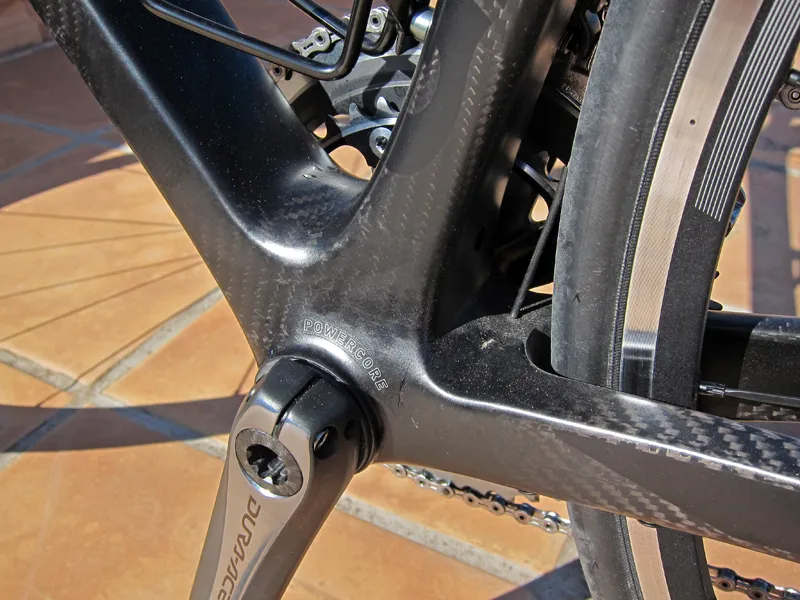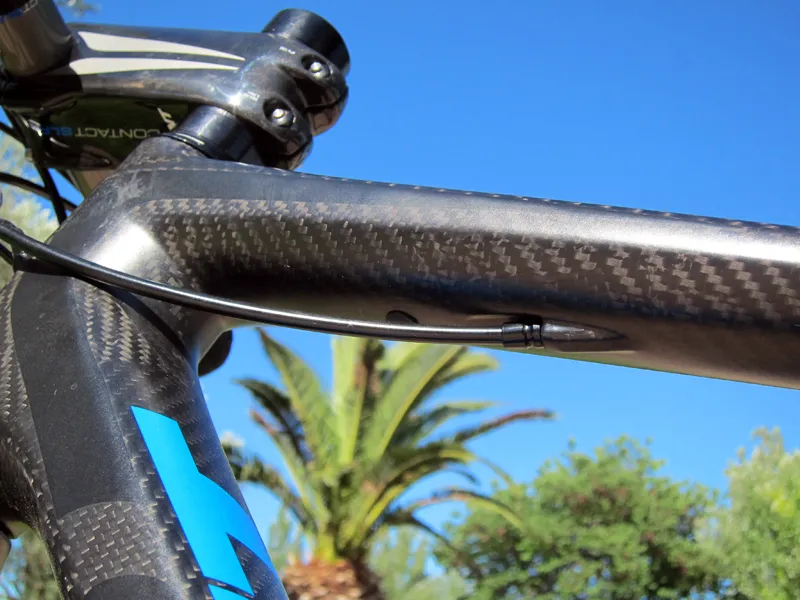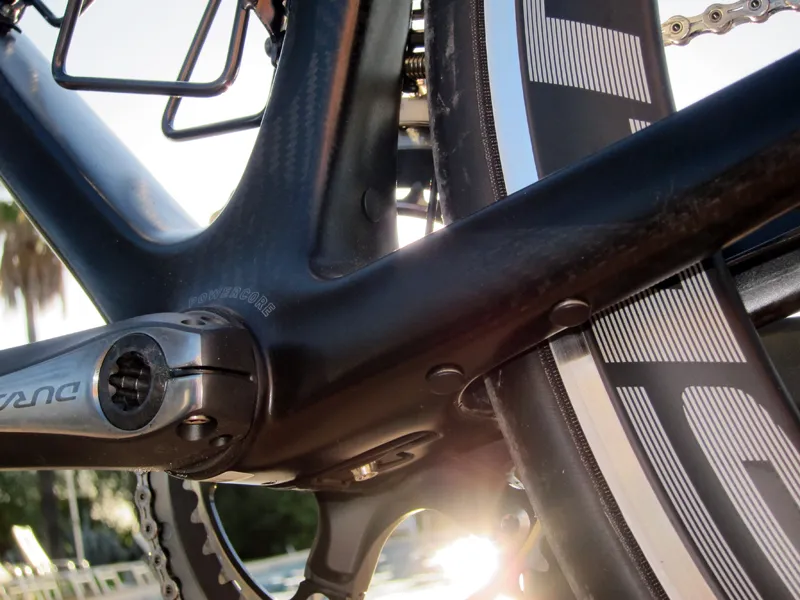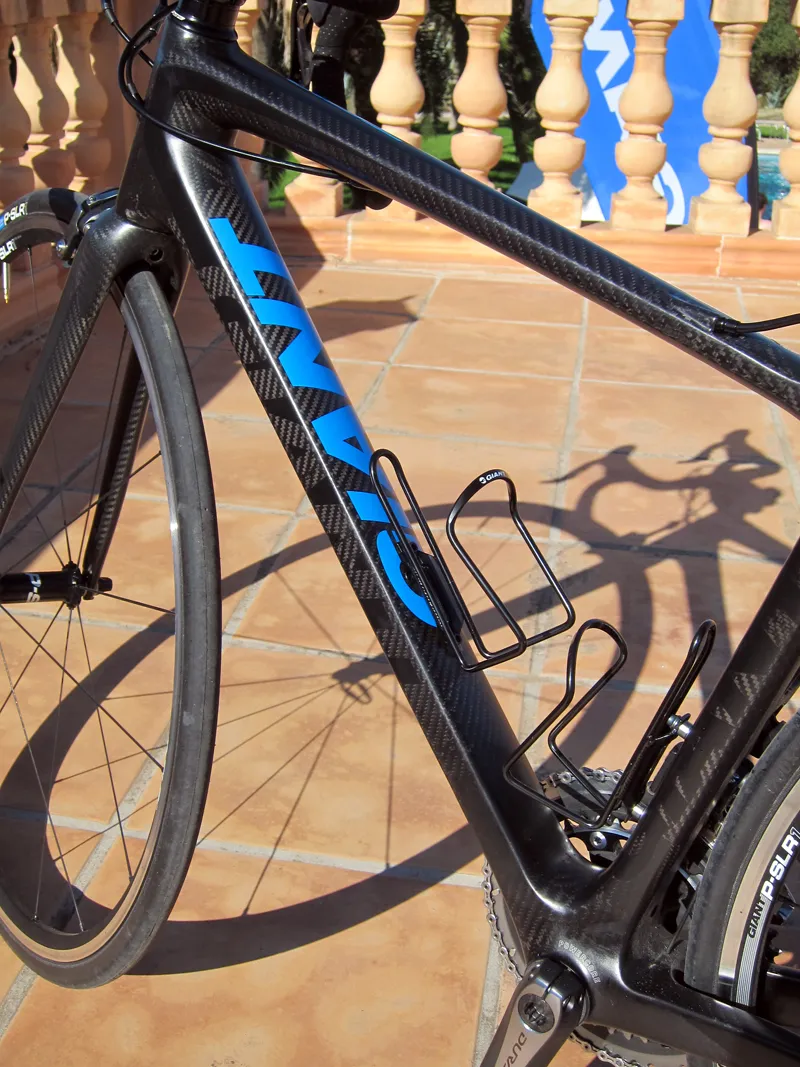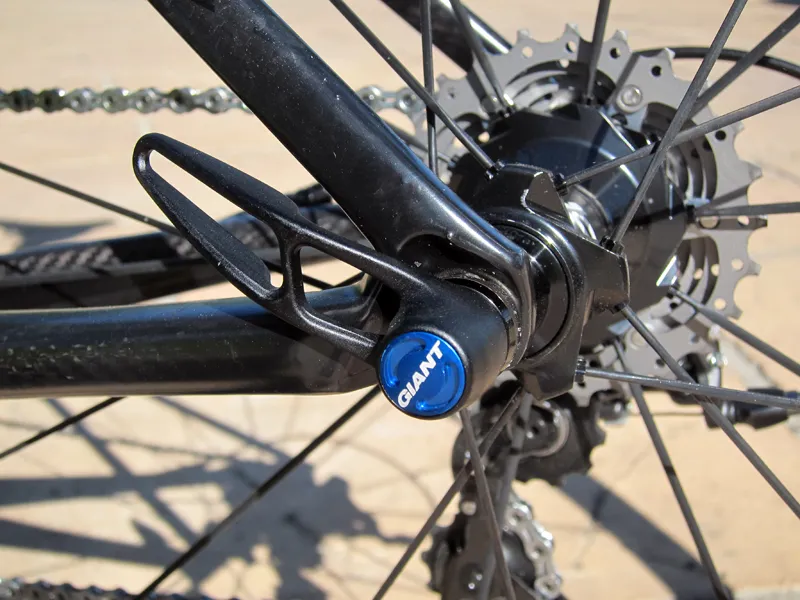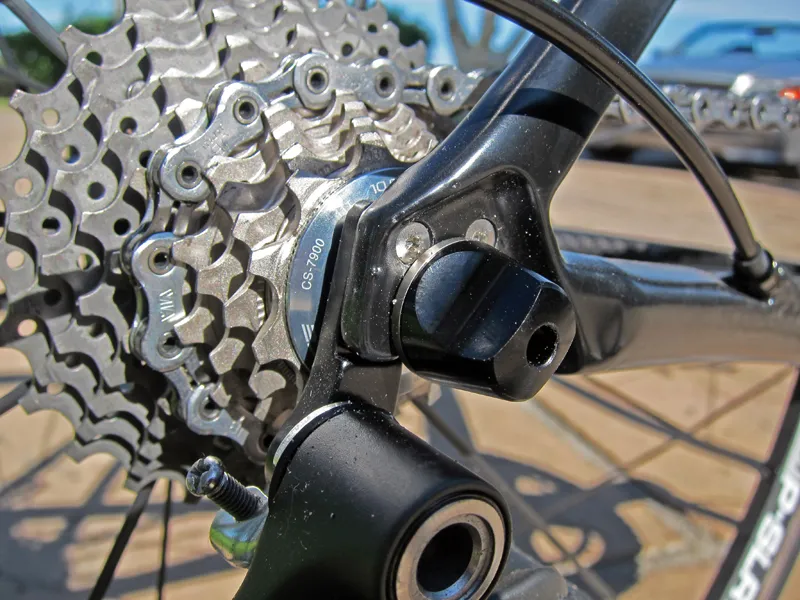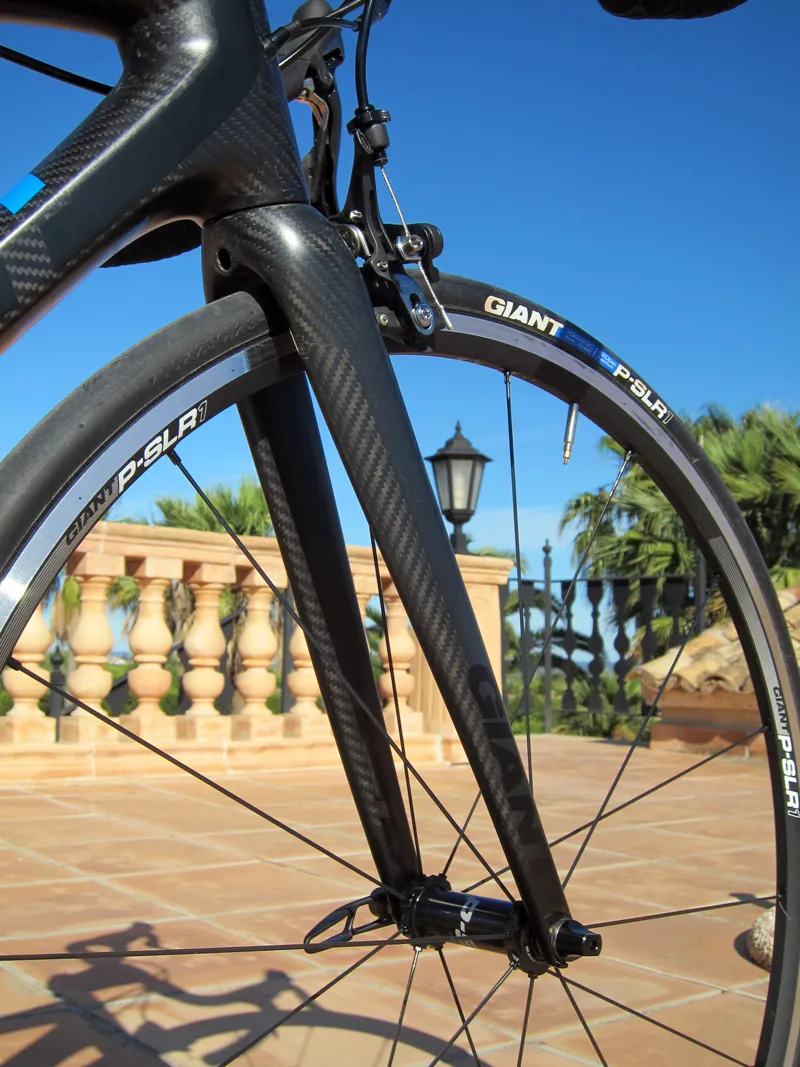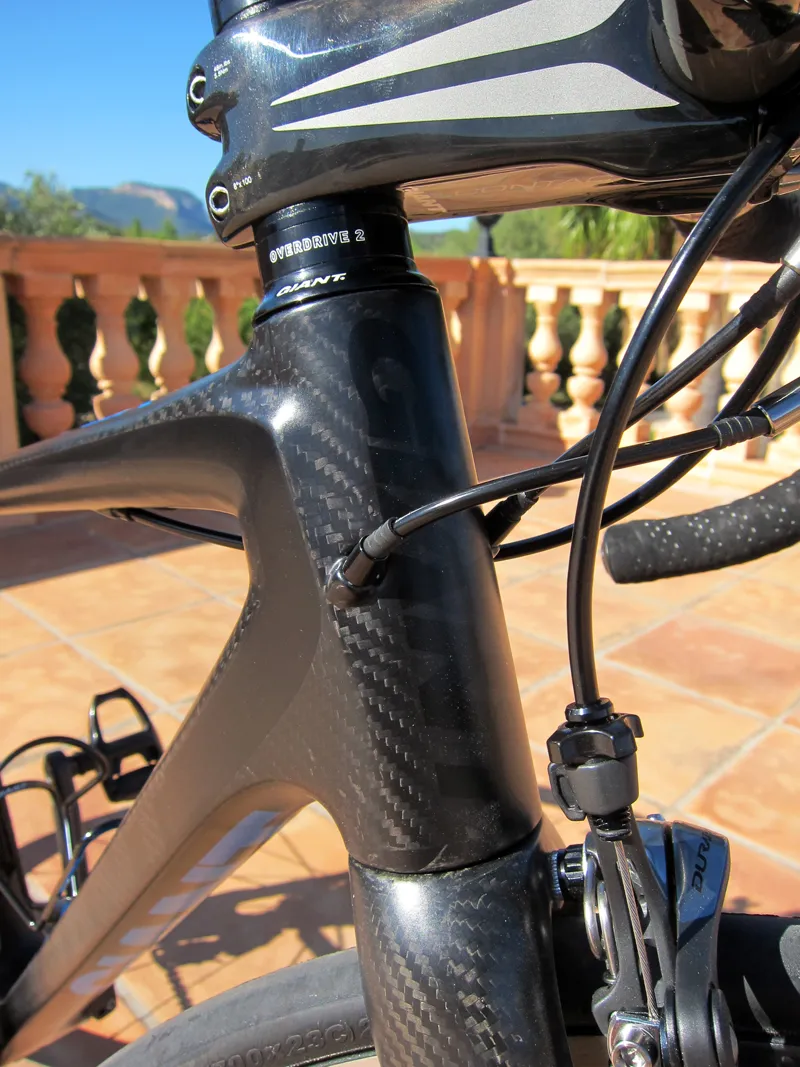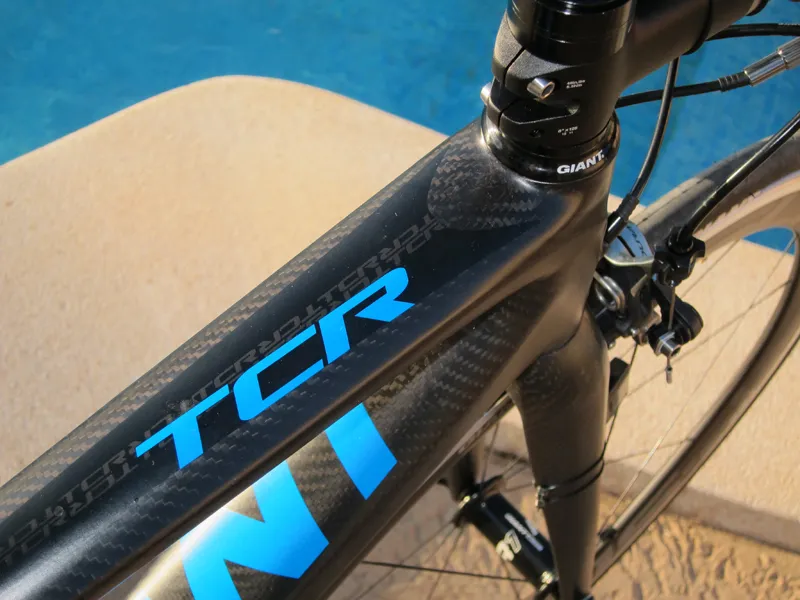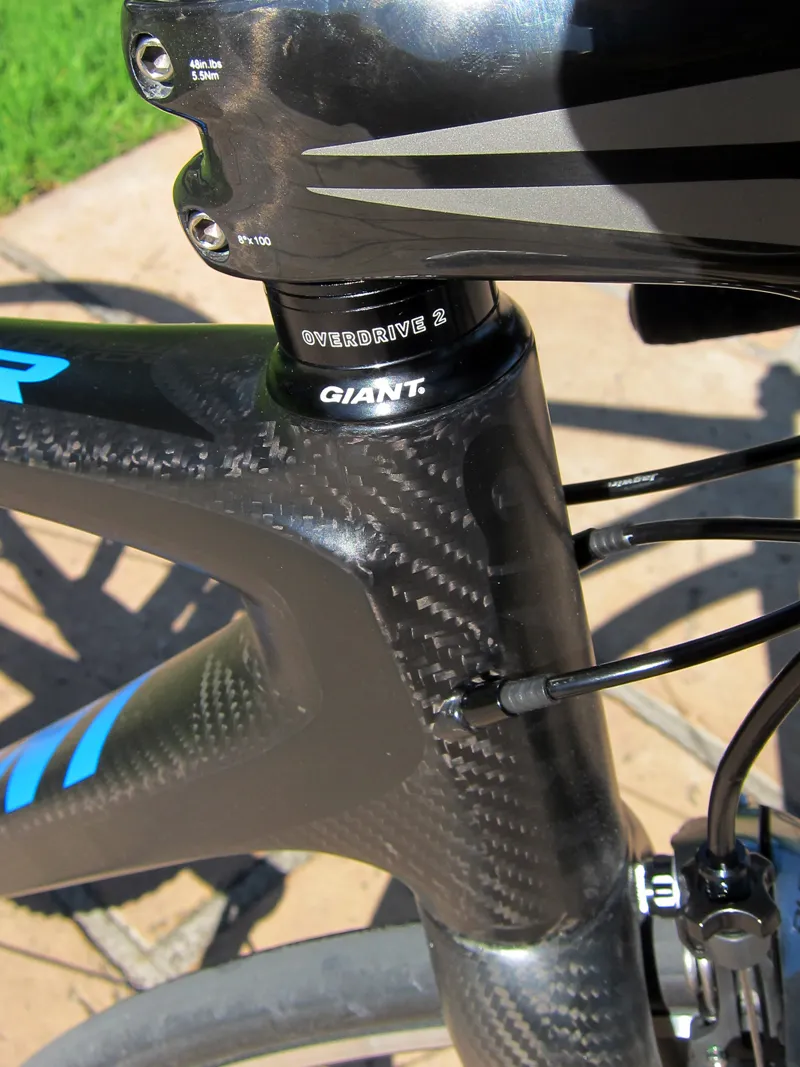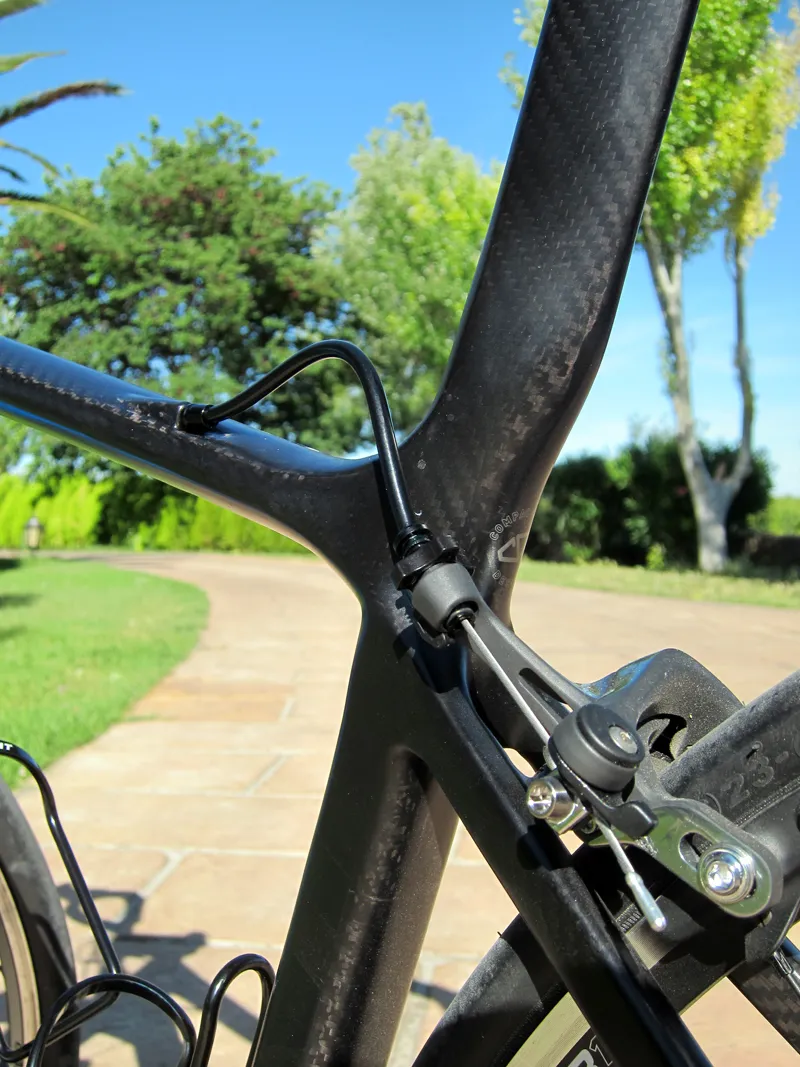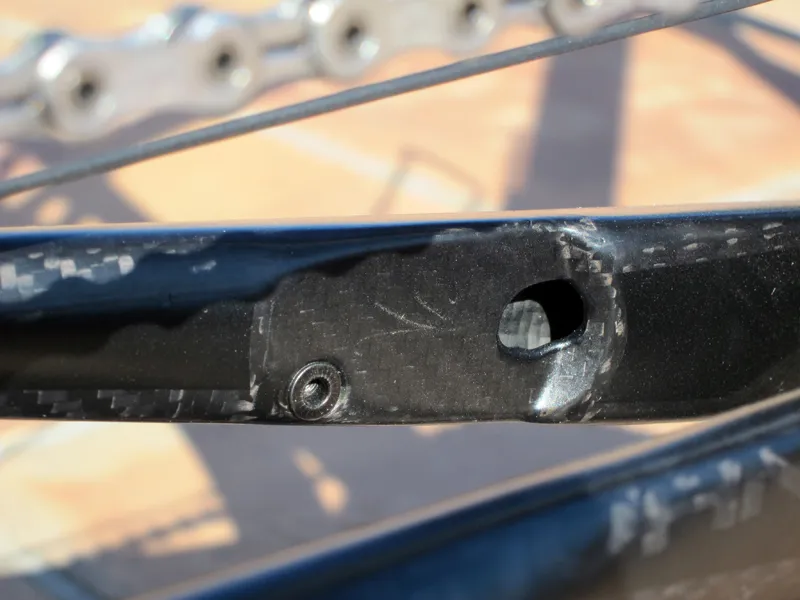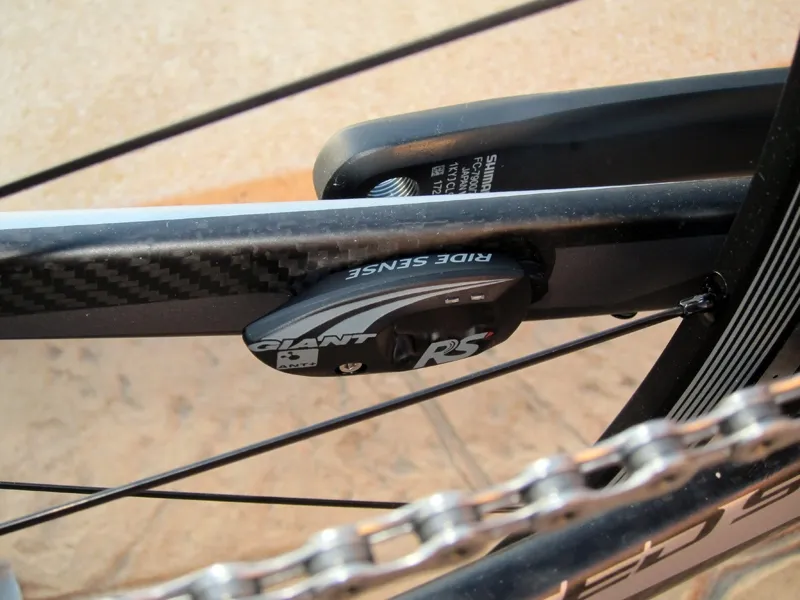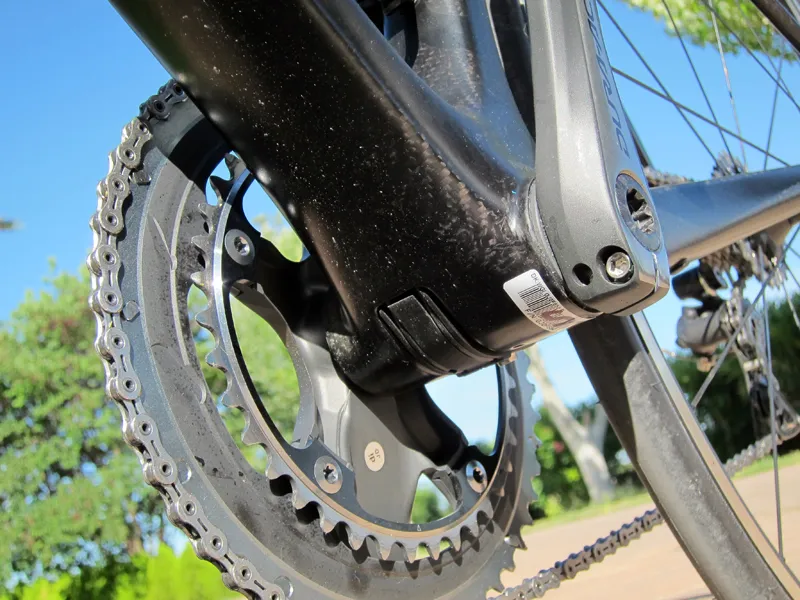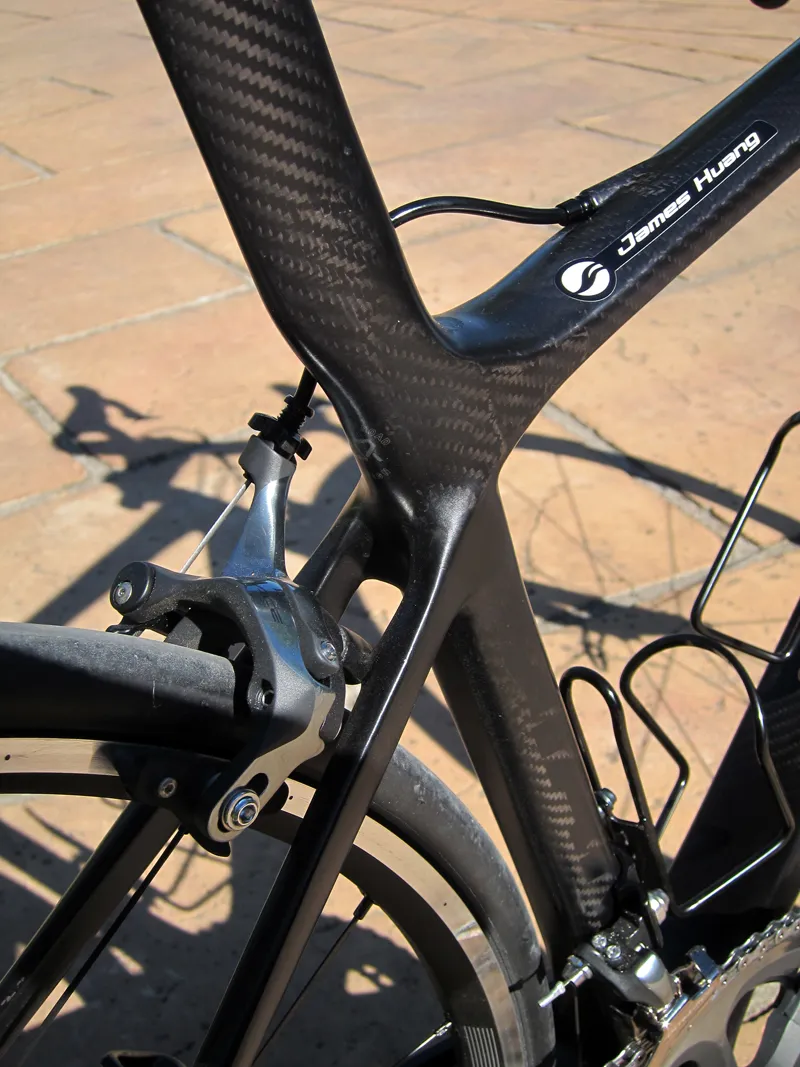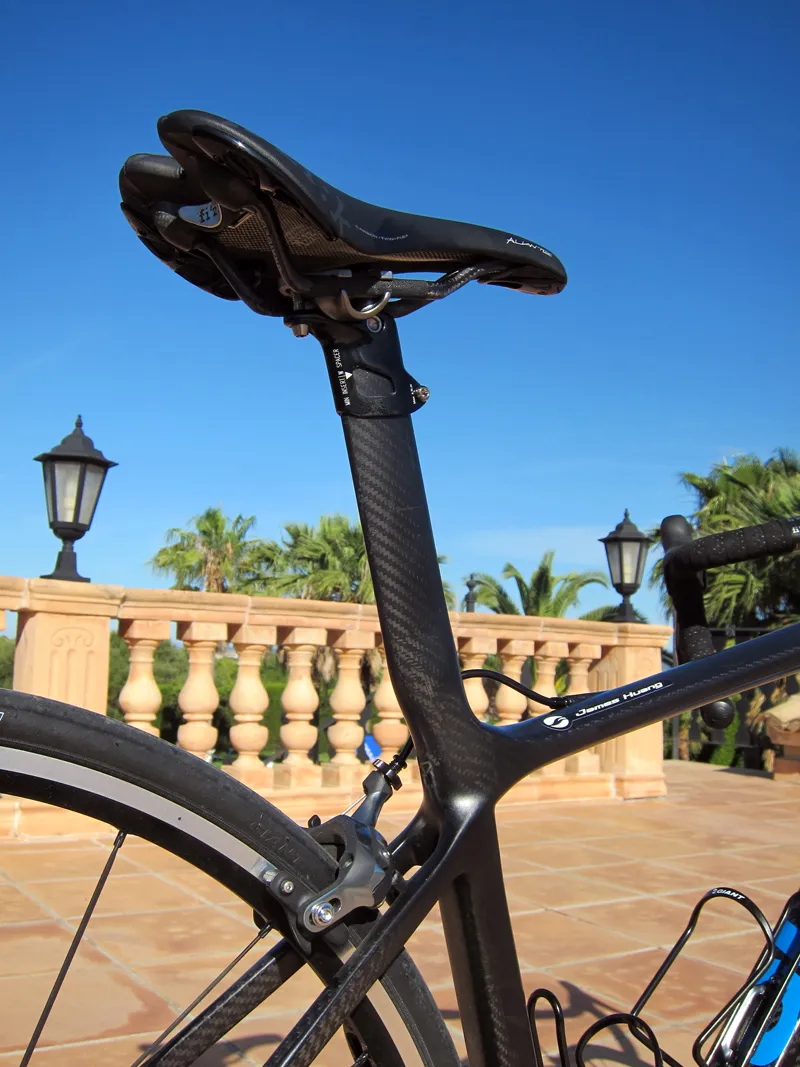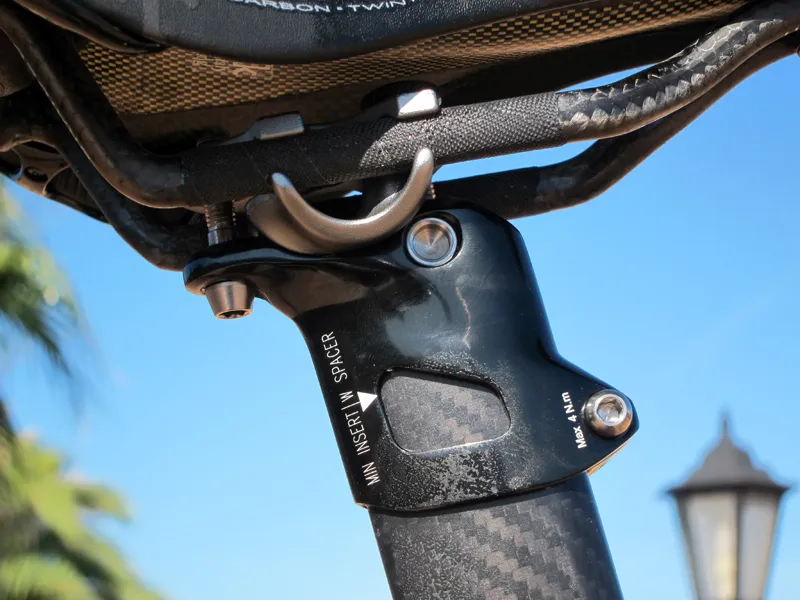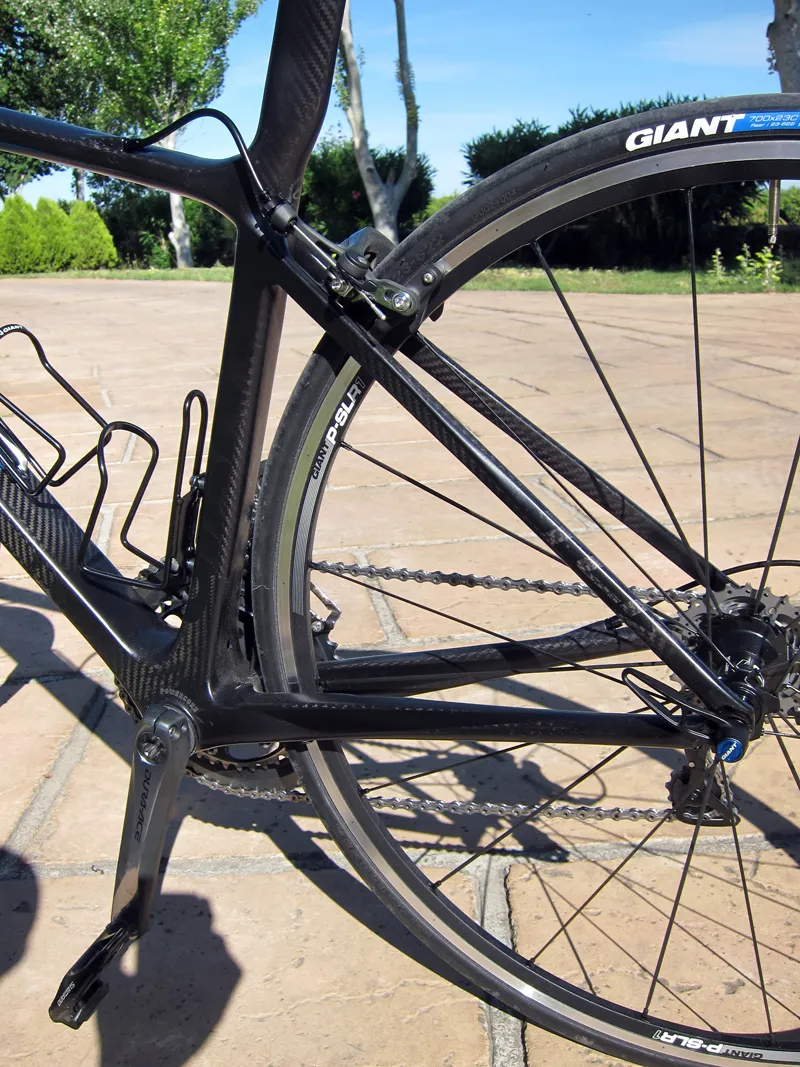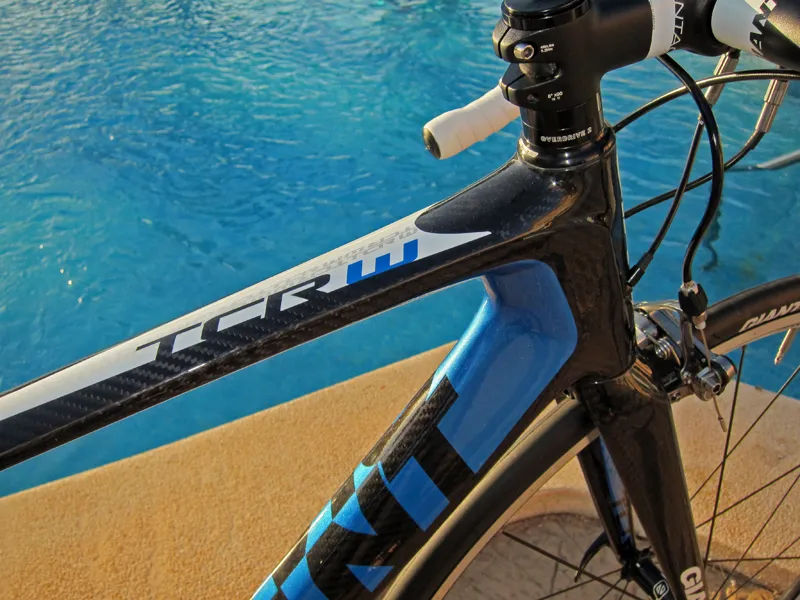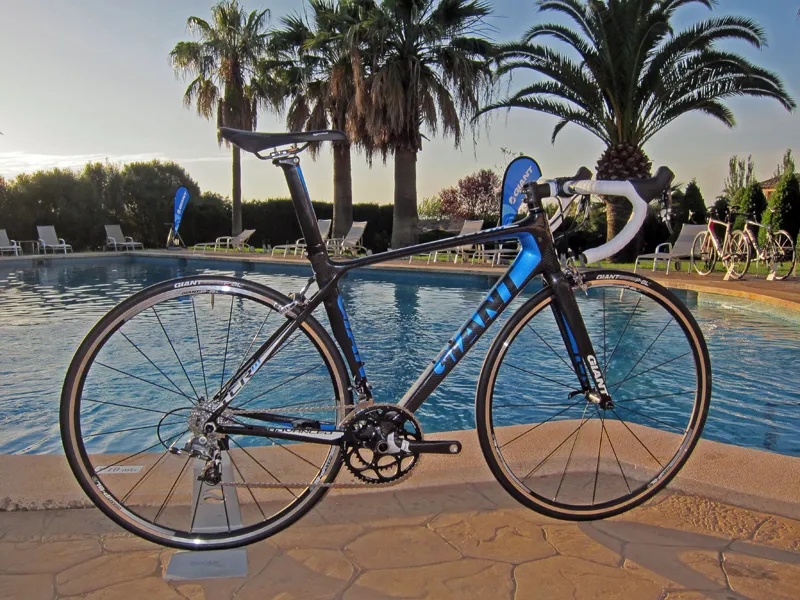Giant's 2012 road bike range doesn't present the obvious visual changes we usually expect from a newly overhauled collection. The design language is still present from the current family and changes are mostly subtle below-the-skin tweaks instead of wholesale changes in direction. But it's unlikely most consumers will be upset.
Progression in materials and construction methods have allowed the company to shed big chunks of weight from the carbon frames while retaining their resilient ride quality and confident handling. The other major improvement comes in overall handling precision, which makes a significant jump with the move towards an even more oversized 1 1/4-to-1 1/2in tapered front end called OverDrive2.
We can hear it already – "Another new standard??!!" Yep, 'tis true but there's a good engineering reason for the shift and it's worth noting that Giant isn't the first company to go this route. Canyon Bicycles uses the same steerer dimension for its OneOneFour-equipped bikes and there's little debating the connected feeling that that front end provides.
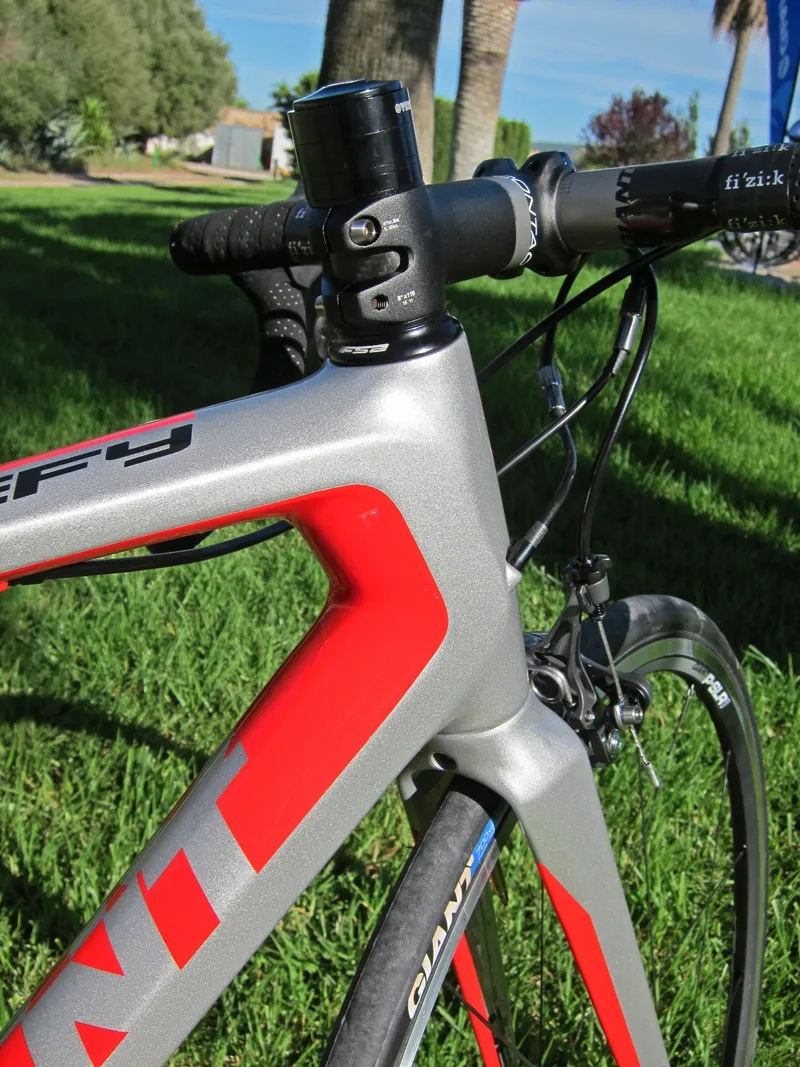
Tube shaping on the Defy range is very similar to the top-end TCR, including the bulbous squared-off head tube housing the new OverDrive 2 1 1/4-to-1 1/2in tapered steerer tube.
In this case, Giant is claiming up to a 40 percent increase in "steering stiffness" with essentially no increase in weight and while we can't validate that exact number, test rides on new models confirmed that there's a tangible improvement in how well the front end responds to steering inputs and resists twisting.
If our hunch is correct, you'll likely see more manufacturers heading that way, too, as there's also minimal impact on consumers in terms of component compatibility. Giant of course will offer its own stems with a 1 1/4in clamp but other models already exist from Ritchey, Syntace, and FSA (PRO has stems in the works, too).
Interestingly, Giant has also managed to fit the bigger fork in the same head tube as before, meaning that current owners with older OverDrive front ends can upgrade simply by swapping out their fork, upper headset hardware, stem, and spacers.
All of the new frames also feature fully internal cable routing along with Shimano Di2-ready fittings and ports for batteries and wiring harnesses.
Presenting the new TCR family
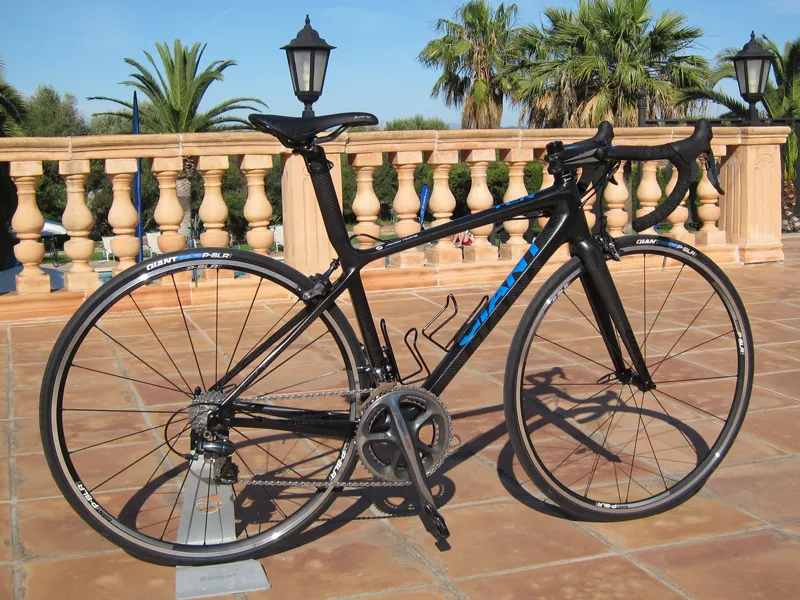
The new Giant TCR Advanced SL
Sitting at the top of TCR totem pole for 2012 is again the Rabobank team-issue TCR Advanced SL. Features carrying over from the 2011 model are the familiar PowerCore extra-wide bottom bracket shell with press-fit bearing cups, the rounded rectangular MegaDrive down tube, and integrated seatpost – all with subtle shape refinements.
In addition to the improved steering precision, the latest TCR Advanced SL frame has shed over 140g – claimed weight for a medium size is now just 820g (from 968g last year). In addition, Giant says there's been virtually no loss in frame stiffness while impact durability has supposedly improved by 14 percent thanks to new nanotube-infused resins.
Giant sloughed off those extra grams through several engineering strategies. Switching to Toray's stiffer T-800 fibers required less material to achieve the same benchmarks, a new "Continuous Fiber Technology" lopped off 100g by utilizing a greater proportion of uninterrupted plies and fewer small swatches of carbon, and a number of previously aluminum bits have been changed to carbon fiber, including the rear dropouts, the bottom bracket sleeve, and new direct drop-in headset bearing seats.
A refined "Fusion" double-molded construction technique is said to yield lighter joints between the various frame sections, too, and a move to 'A-type' seat stays instead of the previous version's wishbone allowed for lighter weights without losing rear-end stiffness.
In addition, the rear derailleur hanger has been modified to provide better structural support (and thus, better shifting under load) and the non-driveside chain stay now sports a small pocket for Giant's RideSense ANT compatible wireless speed and cadence sensor.
The second-tier TCR Advanced is intended as the "workhorse racer" of the range, subbing in a conventional telescoping aero-profile seatpost in lieu of the SL's more flexible integrated mast (supposedly sacrificing 15 percent in rider comfort as a result) and Toray's T-700 fibers. Giant also sticks with aluminum for the dropouts and bottom bracket sleeve and uses a more conventional modular monocoque construction technique.
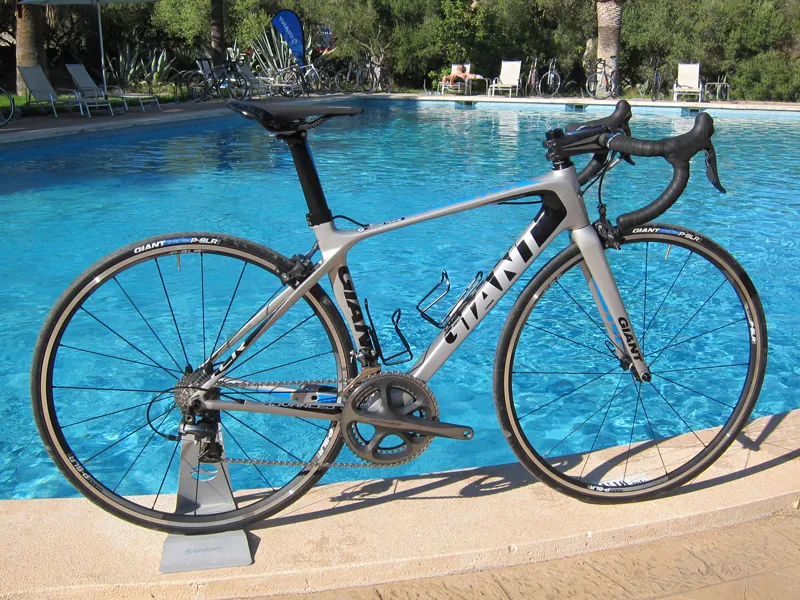
The new TCR Advanced
Even so, claimed frame weight has dropped from 968g to 908g and the new OverDrive2 fork only adds another 368g. The TCR Advanced will also offer RideSense compatibility and the same upgraded derailleur hanger, and Giant will again offer a proper women's-specific version called the TCR Advanced W as well with a slightly longer head tube and shortened top tube.
Filling out the TCR range is the standard TCR Composite, which essentially borrows the 2011 TCR Advanced mold but swaps in a cheaper grade of carbon fiber to keep costs low (Giant global communications manager Andrew Juskaitis says complete bikes will start at around US$1,500). Despite the inviting price point, claimed frame and fork weights are still a very reasonable 1,070g and 499g, respectively, though at this level Giant will stick to the original OverDrive front end with its more conventional 1 1/8-to-1 1/2in steerer.
It's worth mentioning that Giant has not jumped on the aero road bandwagon – at least not yet – and is instead choosing to focus on stiffness, weight, and ride quality. While the company's presentation offered some cursory data on some computational fluid dynamic modeling work done in-house, there were no claims of "X seconds of savings" or "X grams less drag".
Going the distance with Defy
Giant's popular Defy range will continue on for 2012 for riders seeking a softer ride and more stable handling. Just as before, head tubes are on average about 15mm longer than on comparably sized TCR frames, chain stays are 15mm longer, and top tubes shorten by about 10mm.
Giant isn't targeting only recreational riders with Defy, however, as a new Defy Advanced SL model has been added for 2012 for when the company's sponsored Rabobank professional team needs something a little mellower for special events like some of the Belgian spring classics.
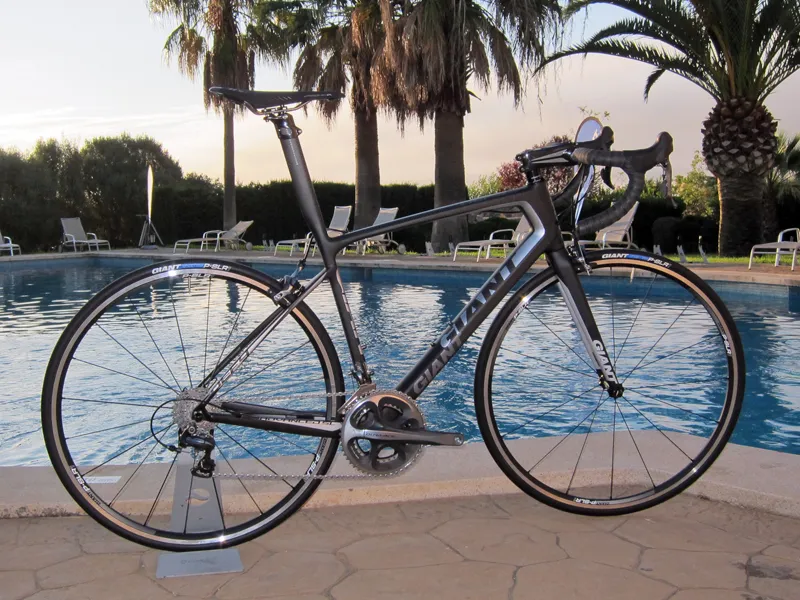
Giant Defy Advanced SL
The new Defy Advanced SL includes the same technical upgrades as the TCR Advanced SL, including the Toray T-800 carbon fiber blends, updated Fusion construction method, the Continuous Fiber Technology lay-up techniques, an integrated seatpost and carbon fiber dropouts and bottom bracket sleeve.
The OverDrive2 front end, MegaDrive down tube shaping, and PowerCore extra-wide press-fit bottom bracket design make their way over as well but the frame shape has overall been tweaked to lend more vertical movement and a generally smoother glide over rough ground. Wispy climber-types will be especially interested to hear that the Defy Advanced SL will actually be Giant's lightest road frame for 2012 with a claimed weight of just 799g plus 330g for the matching fork.
Changes to the second-tier Defy Advanced mirror those in the TCR family, moving down a step in Toray's carbon fiber family to bring costs down to a more realistic level, swapping in a conventional telescoping aero-profile seatpost, and swapping in aluminum instead of carbon fiber parts. Claimed frame weight for the 2012 model still drops a whopping 19 percent from 1060g to 894g, though, and the matching OverDrive2 fork is pegged at 356g.
Again, Giant will offer a women's version – calling it the Avail Advanced – with similar changes to the frame geometry to accommodate the on-average longer legs and shorter torsos but otherwise making no concessions in terms of overall performance.
Similarly, the Defy Composite (and Avail Composite) borrows its mold from the 2011 Defy Advanced but swaps in a different fiber blend and lay-up schedule for cost purposes. Claimed frame weight is still just 1,090g plus 399g for the matching fork.
Finally, there's also an aluminum Defy frame coming in at 1,290g for the frame and 524g for the carbon-and-alloy fork. The women's Avail version will post similar figures.
New wheels, tires, and components, too
Giant has also opted to toss its hat into the crowded prebuilt road clincher wheelset market for 2012, offering them at aftermarket but also featuring them as original equipment on its own bikes. Top-end models were developed in conjunction with DT Swiss and borrow heavily from that company's proven technology bin.
The P-SLR1 is intended for climbers and everyday use with a total claimed weight of just 1,390g for the pair without skewers. The wide-profile rim features a 21.6mm external and 16.9mm internal width for improved ride and handling but a modest 21mm depth to keep the weight down and further smooth things out on rough ground.
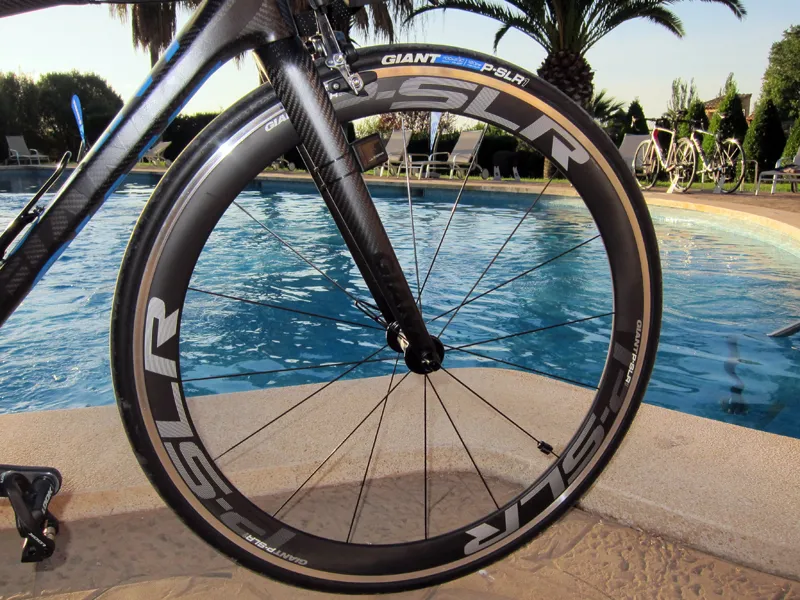
Giant P-SLR1
DT Swiss provides its star ratchet rear hub guts, axle and bearing technology, and Tricon straight-pull bladed stainless steel spoke anchoring systems but Giant has specced its own hub shells with wider flange spacing for better lateral stiffness. Out back, Giant has even gone with a highly asymmetrical rim profile to even out the spoke tension between the driveside and non-driveside and made the bold decision to offer only Shimano/SRAM compatibility, allowing the driveside flange to move outboard by 2mm. Borrowing DT Swiss'sTriconspoke anchoring setup also brings with it an added bonus: a solid outer rim wall and easily compatibility with tubeless road tires.
Riders seeking a bit more speed can instead opt for the Giant P-SLR1 Aero set, which features the same hubs and rim width as the non-Aero wheels but a more aggressive 49mm depth to help cut through the wind. Even so, claimed weight is still just 1,575g for the pair but the drilled rims and internal nipples mean that the P-SLR1 Aero wheels will only be tubeless compatible after adding an airtight rim strip.
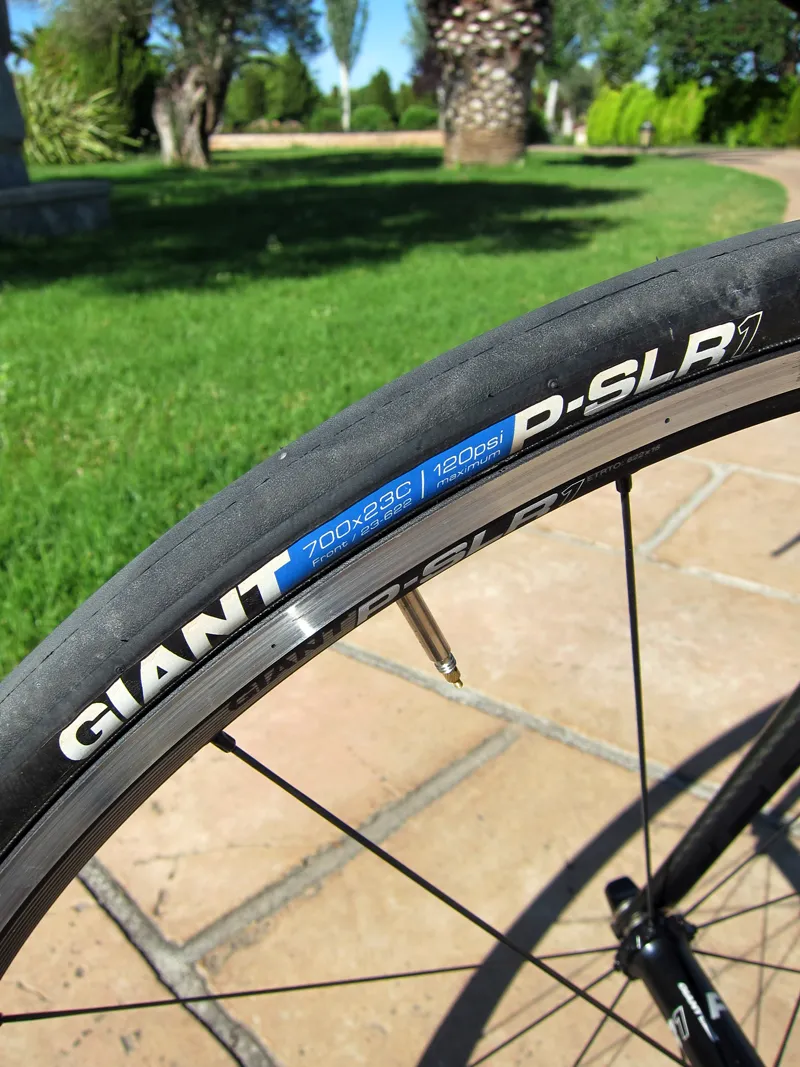
Giant P-SLR1 tires
Naturally, Giant hopes you'll pair either wheelset with its new 23mm-wide P-SLR1 road tires, which feature 120TPI nylon casings, front/rear-specific dual-density slick treads, foldable aramid fiber beads and molded-in wear indicators located right down the center of the tire where they're most useful.
OverDrive2-equipped Giant bikes will also come with the company's own stems. The top-end Contact SLR gets an absolutely gargantuan carbon fiber extension (similar in scale to PRO's Cavendish Star Series aluminum model), a four-bolt aluminum faceplate and titanium hardware – all at just 135g for a 110mm-long version and coming in a whopping ten sizes. The more conventional standard Contact comes in just 10g heavier, too, despite its forged aluminum construction. Projected availability for all of Giant's upper-end 2012 range is late autumn.
US bike and wheelset prices are as follows:
- TCR Advanced SL- ISP US$12,500
- TCR Advanced - US$4,400
- TCR Composite - US$2,650
- Defy Advanced SL - US$7,000
- Defy Advanced - US$4,400
- Defy Composite - US$2,650
- TCR Advanced W - US$3,700
- Avail Advanced - US$4,400
- Avail Composite - US$2,650
- Avail - US$1,350
- P-SLR1 Aerowheelset - US$1,600
- P-SLR1wheelset - US$1,000
- P-SL0 wheelset - US$600
- P-SL1 wheelset - US$350
